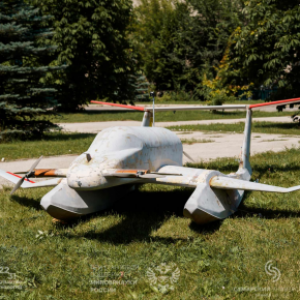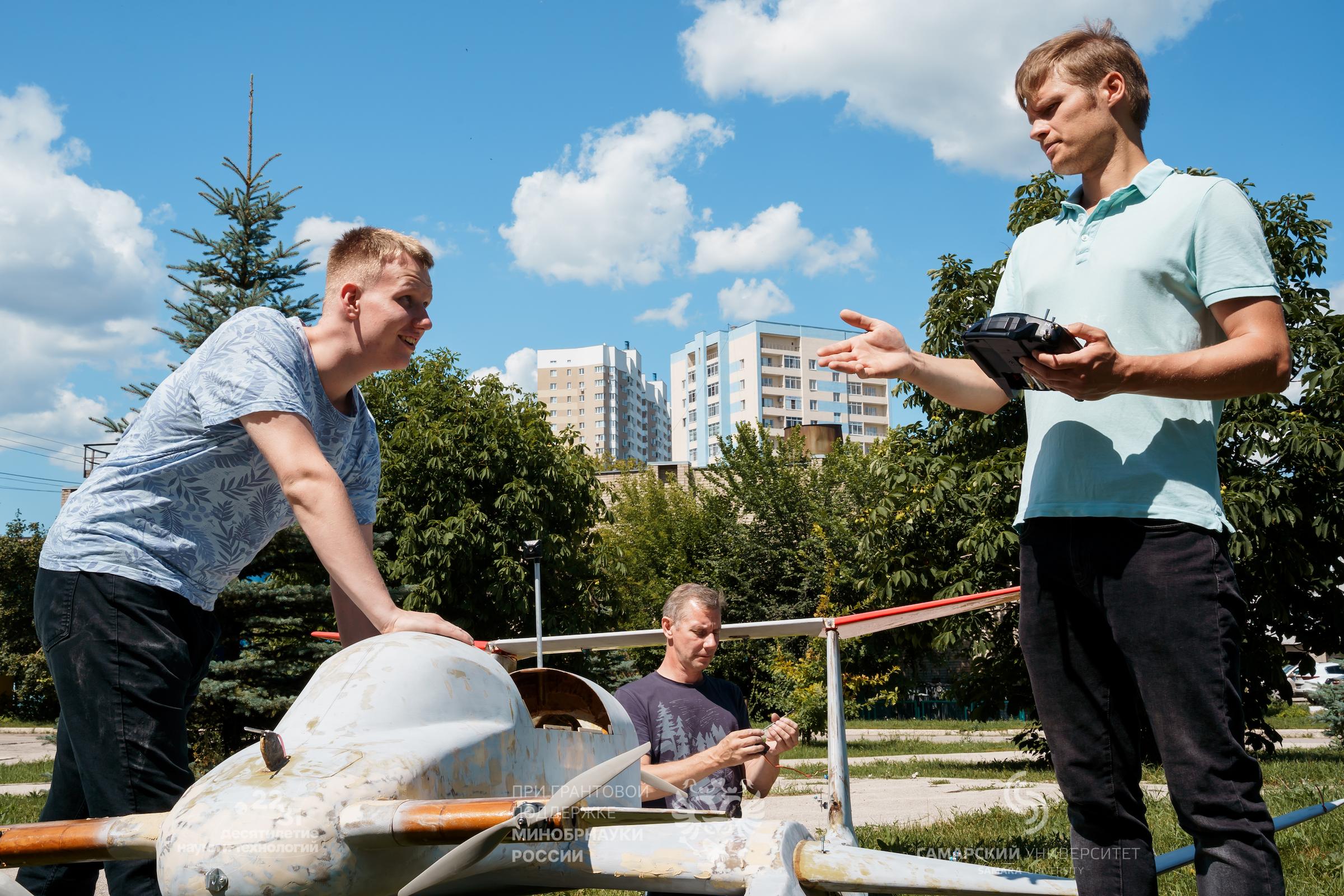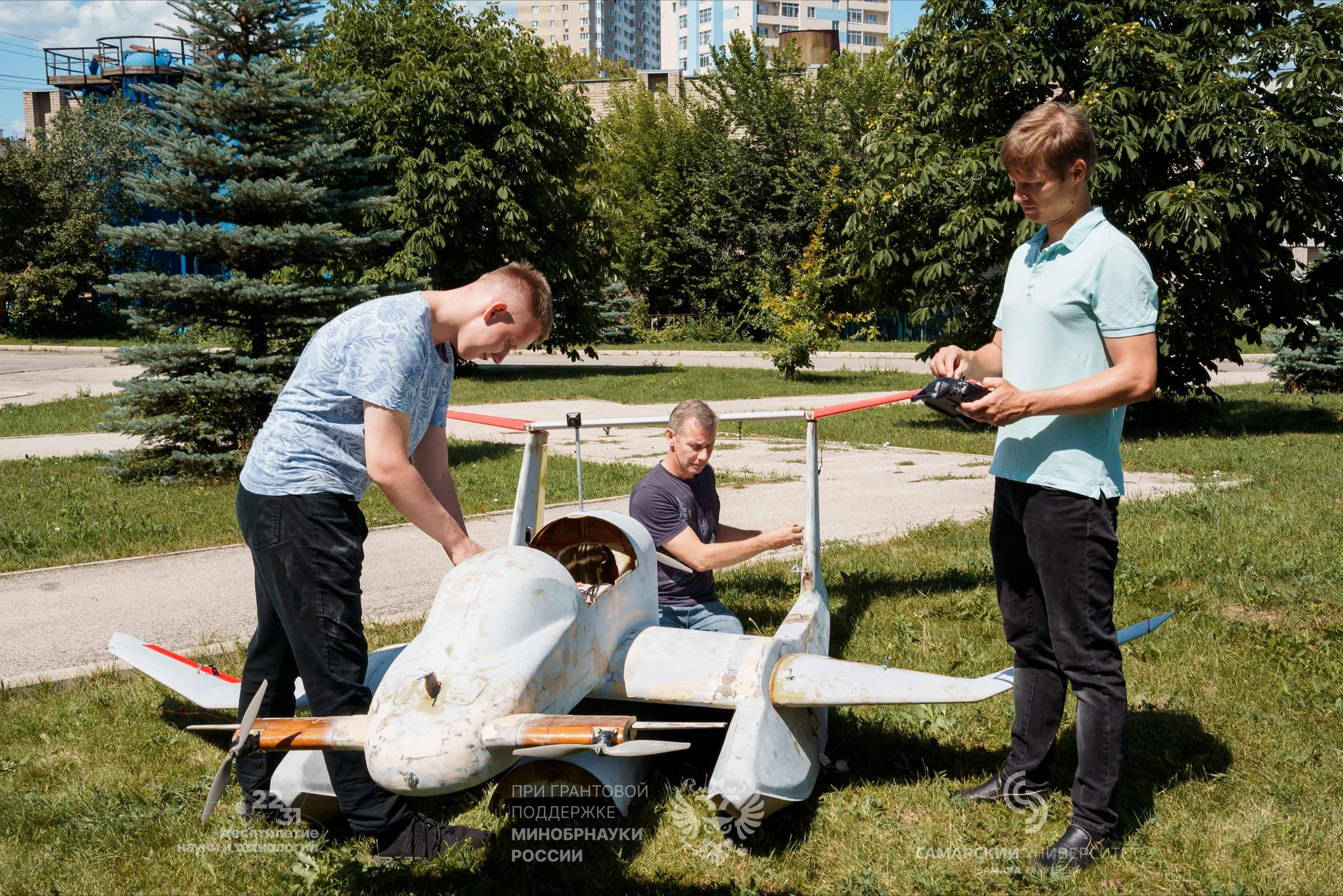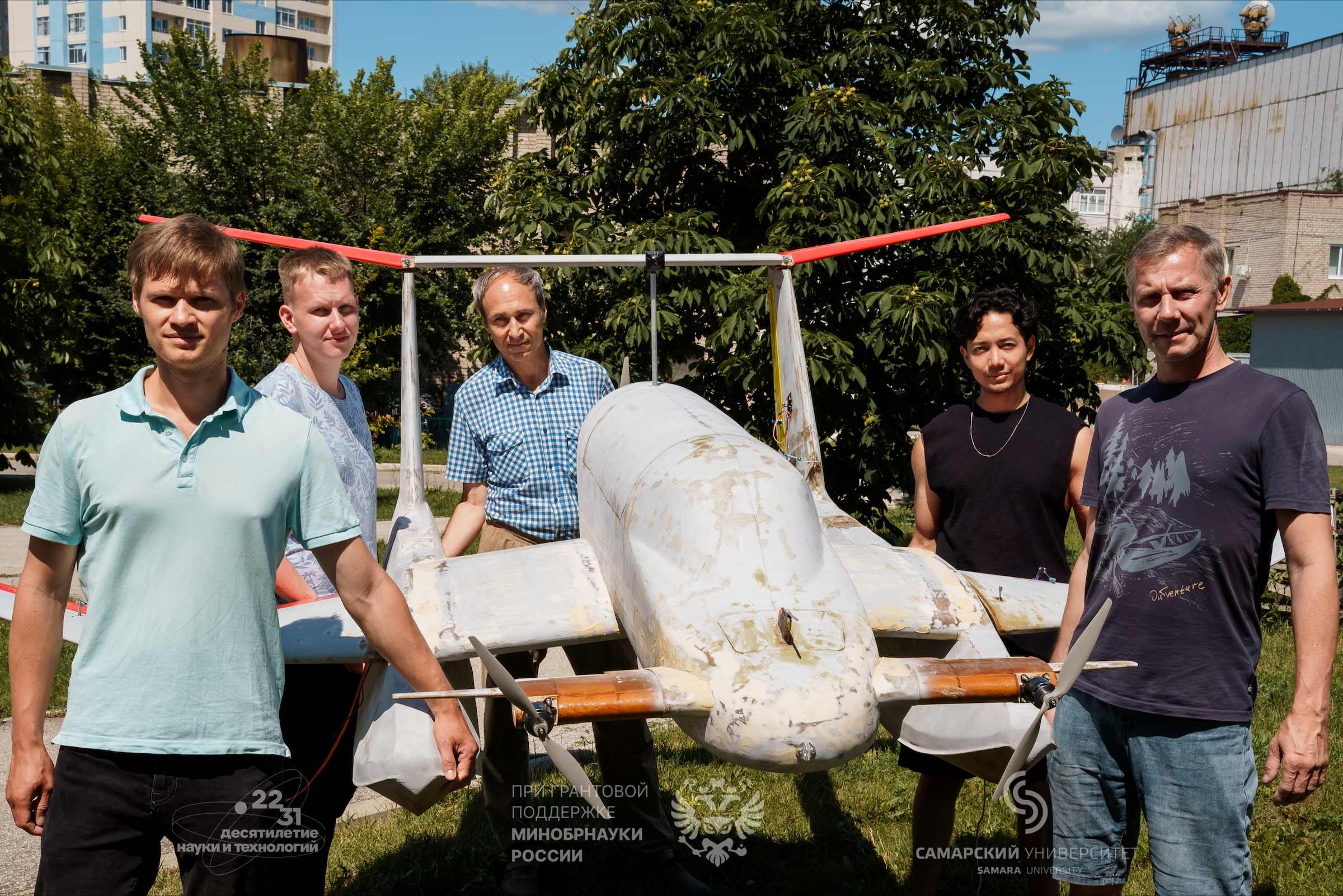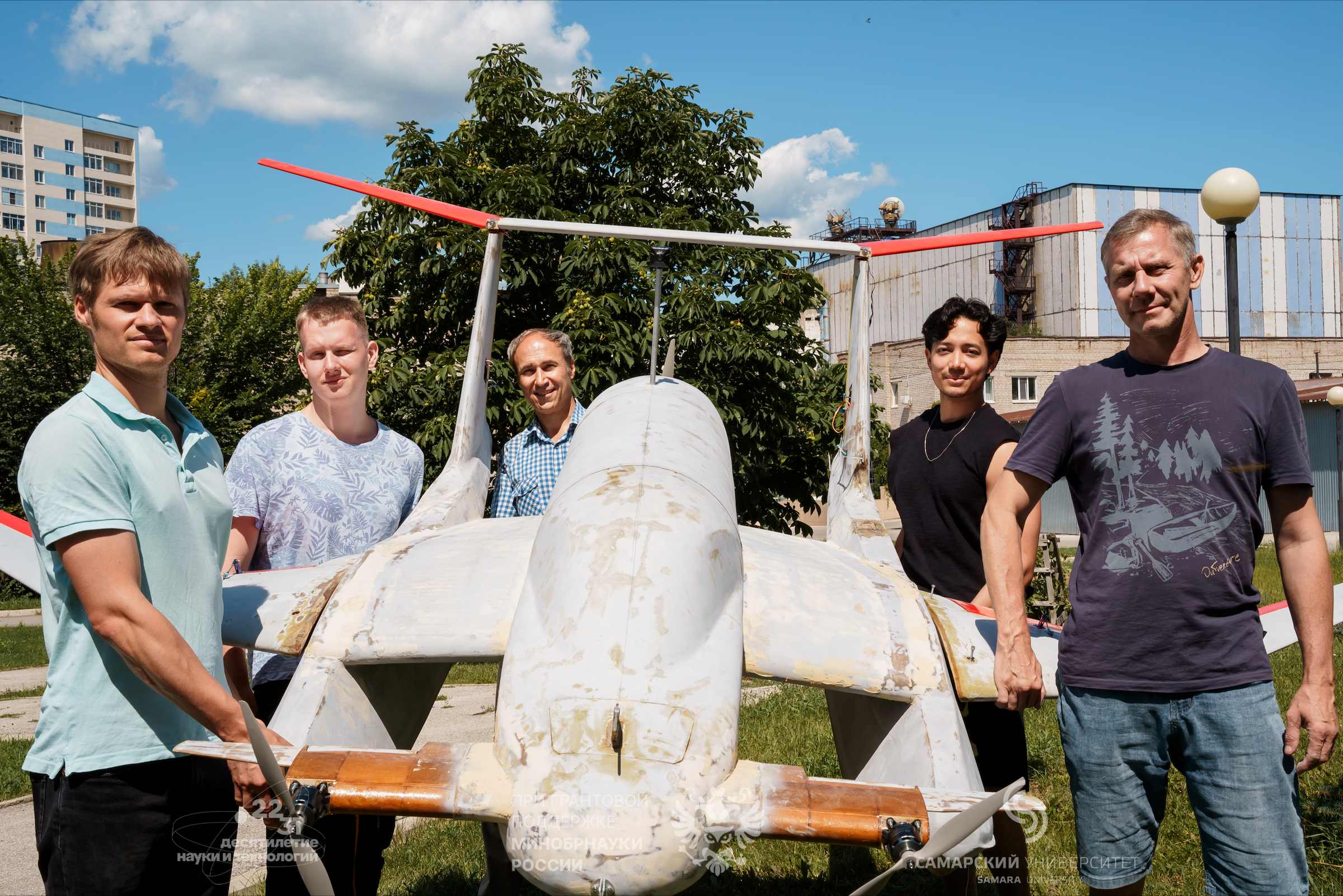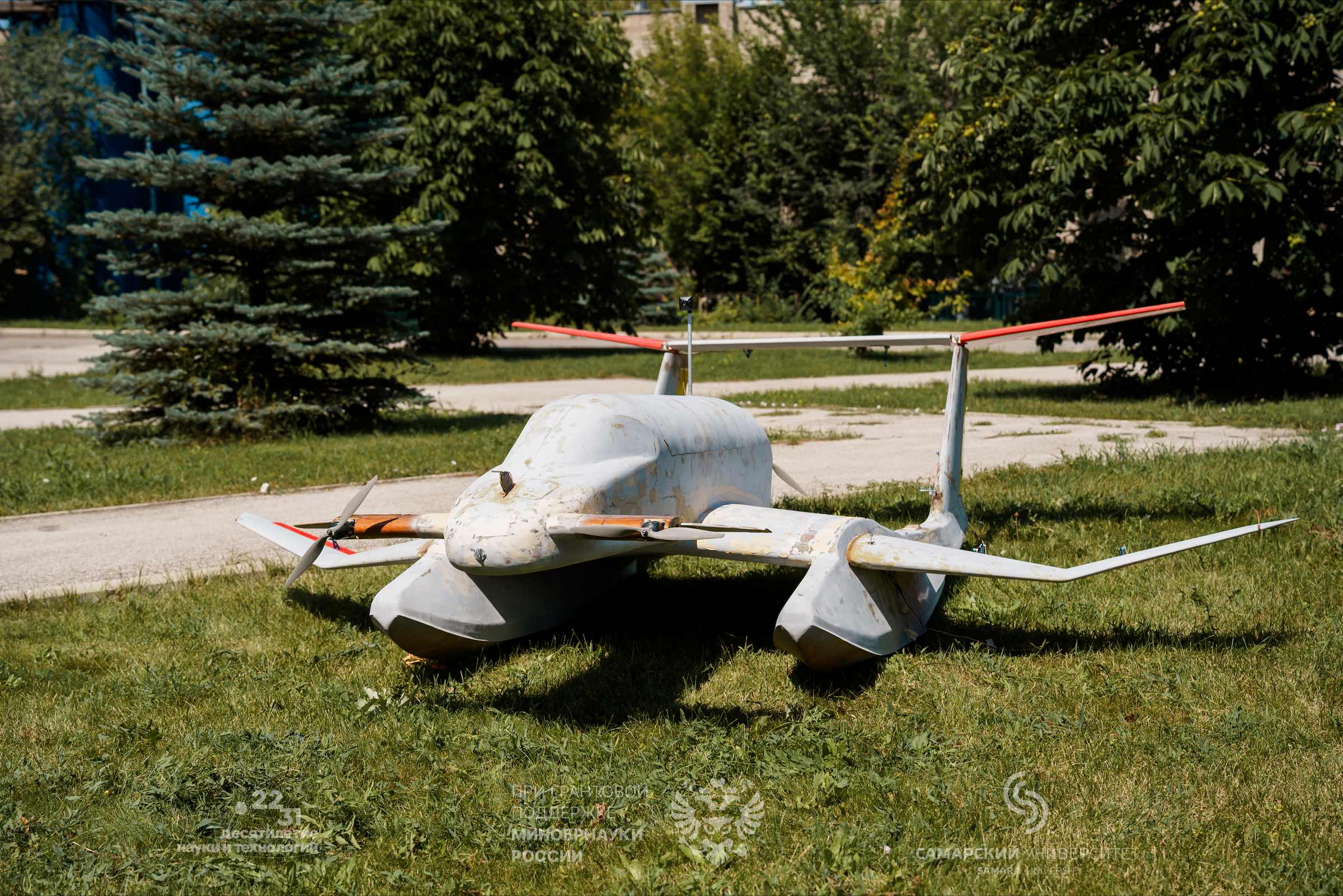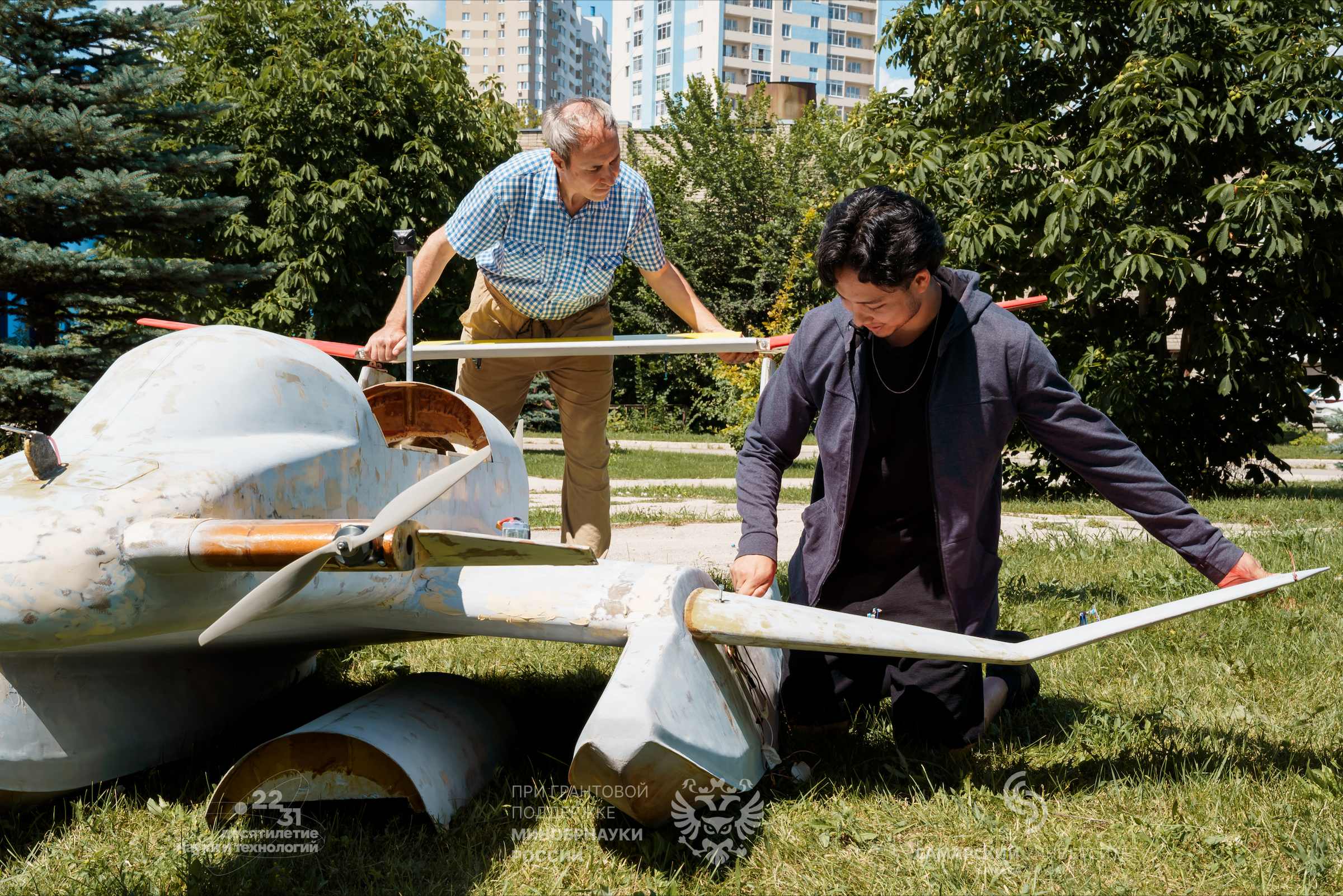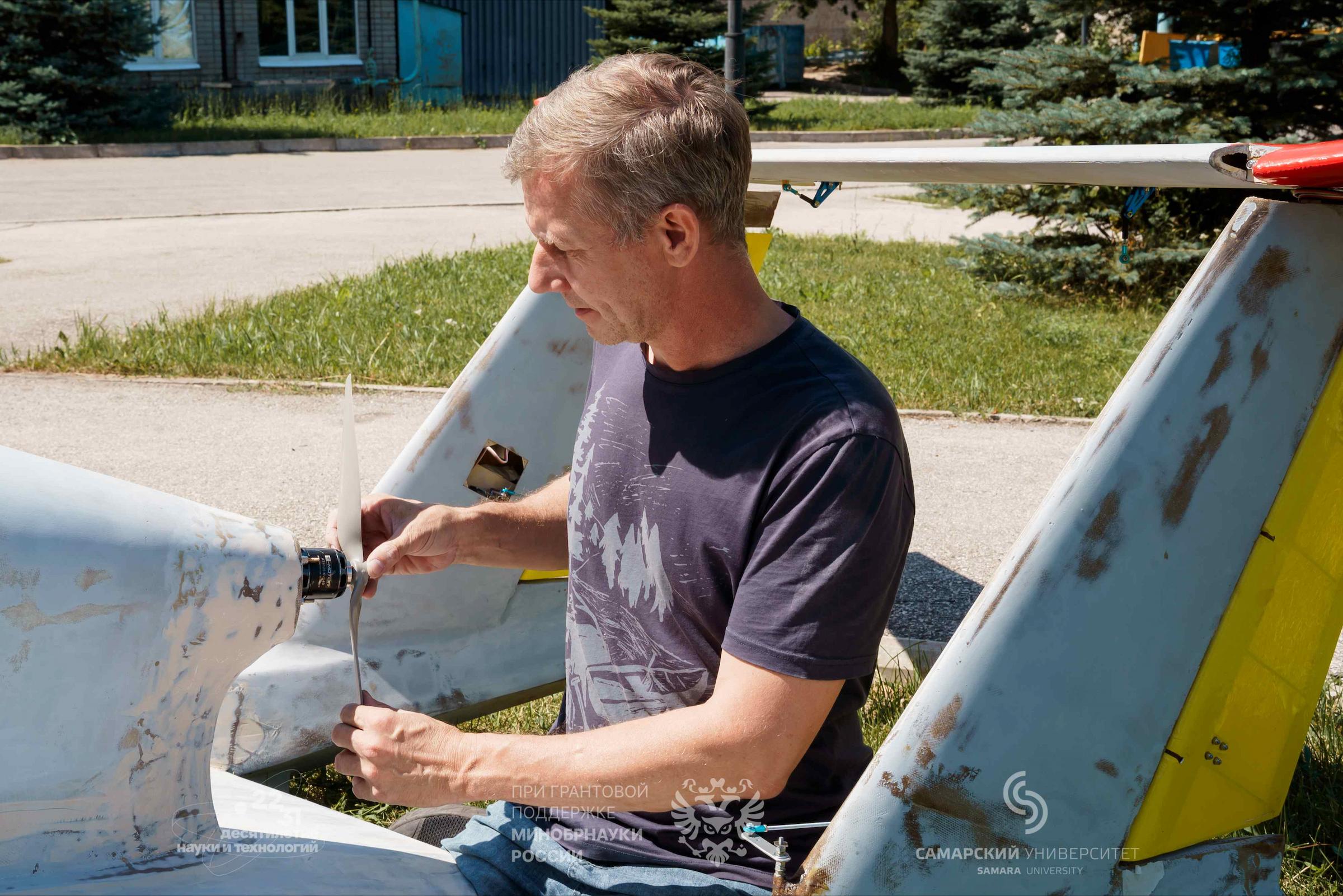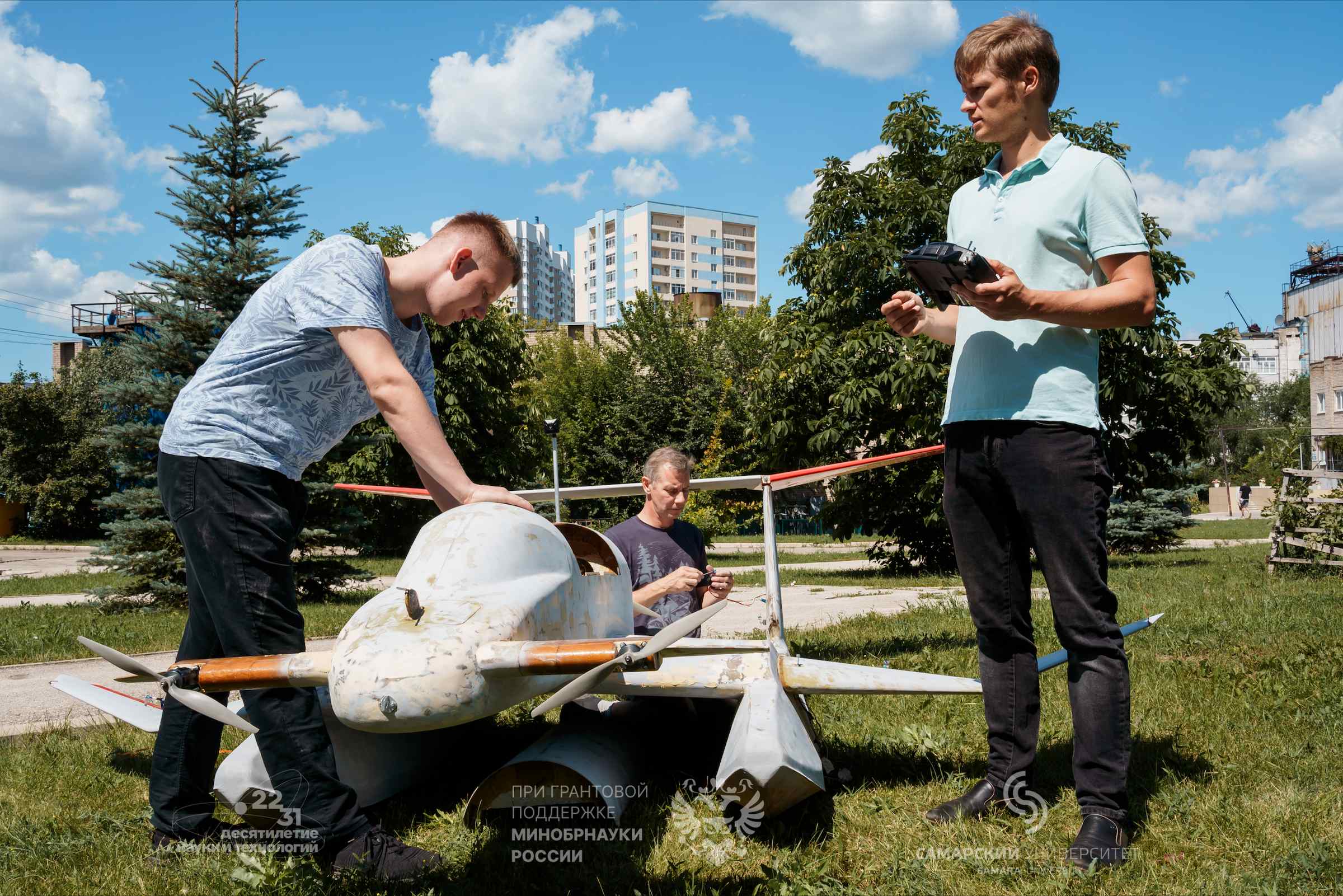Samara University’s engineers and students has developed and manufactured a large-scale test flying model of the ten-seat passenger ground-effect vehicle (GEV) “OROS-1” being created by Fersel LLC (Moscow). During field tests, this model is planned to to be used for working out various aspects of the flight of the future GEV, including its aero- and hydrodynamic properties and specifications, considering features of its separation from the water surface and its splashdown.
“The current flying model has been developed and manufactured at our University at the order of Fersel LLC, which is engaged in creating a small-sized passenger ground-effect vehicle. According to the project, such a GEV will be able to take ten passengers on board, and the expanded version with 15 passengers is expected in future. Such small-sized GEVs, capable of taking off from the surface of rivers and lakes and splashing down, will be able, for example, to solve the problem of transport accessibility of many small settlements located on the banks of rivers. They do not need an equipped airfield with runways, a pontoon berth is enough, and their speed, of course, is much higher than that of speedboats and dinghies. It’s like a high-speed vessel, only capable of flying, albeit low, at about a few meters altitude”, said Oleg Lukyanov, Associate Professor at the Department of Aircraft Construction and Design, Head of the interactive advanced engineering training complex based on modern digital technologies “System Engineering of Unmanned Aircraft Systems” at Samara University.
The test model is about five times smaller than the future GEV in size: the fuselage length and wingspan of the model are only about 3.5 m, so it is clear that the model is manufactured in an unmanned version and will be controlled from the ground during tests, like a drone. The device is equipped with three electric engines. The flight speed of the model (not a full-size GEV) is up to 90 km per hour. Inside the fuselage, there are many measuring instruments and various sensors, the radio control and power supply systems.
“The customer provided us with a 3D model of the ground-effect vessel, so to speak, its appearance and main specifications, as well as its construction. Besides, aero- and hydrodynamics to have been calculated by using CFD analysis, the most modern method at the moment, were presented. In course of manufacturing the model, we were refining its design, closely cooperating with the designers of the Fersel Engineering Centre. Since this aerial vehicle is of a non-standard type, we have also developed the special control system for the GEV. Taking off from water and splashing down, as well as moving above the water surface itself, have their own features, there are many special nuances, therefore this device has rather complex aerodynamic configuration: there is a front horizontal tail, a rear tail and a wing of complex shape. Each bearing surface has controlling planes or mechanization. The most powerful engine is in the rear fuselage, and two more, slightly less powerful, are in the front empennage. Of course, hydrodynamic parameters are also important: trim angle, vessel stability, directional stability when riding a wave and heading, speed of gliding, and so on”, emphasized Oleg Lukyanov.
Manufacturing the model took about nine months, the work was carried out at the Scientific and Technological Centre for Composite Materials, at the new technological base of Samara University’s Advanced Aerospace Engineering School. The model was made collapsible, for facilitating its transportation. The model fuselage and wings were made of fiberglass by molding.
For manufacturing, the system for thermovacuum molding of products made of polymer composite materials, by the Ulyanovsk company “Delta-M”, was used. In this powerful system, the furnace volume allows polymerizing under vacuum sufficiently large products: dimensions
of the furnace’s working area are 7 x 3 x 2.2 m.
“It is important to note that, along with adult specialists, many students of our University took part in this project: someone designed a certain part of the model, someone developed technological equipment, molded composite products or was engaged in assembly. That’s exactly how real specialists can be trained on specific projects”, noted Oleg Lukyanov.
The model is planned to be tested at one of water bodies in Samara.
The material has been prepared with the support of the grant provided by Russia’s Ministry of Education and Science within the Decade of Science and Technology.
For reference
A GEV is a vehicle for moving at a low altitude (up to several meters) due to interaction with air reflected from the surface of water, earth, ice or snow.
GEVs can travel at high speed along routes to be inaccessible to conventional vessels. According to the classification of the International Maritime Organization (IMO) and the International Civil Aviation Organization (ICAO), a ground-effect vessel (GEV) is considered as a vessel capable of flight.
Photo by Olesya Orina
 RU
RU  EN
EN  CN
CN  ES
ES 